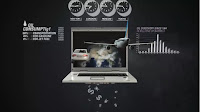The report: "Low Carbon Telecommunications Solutions in China: Current Reductions and Future Potential"
/ Today the report ” Low Carbon Telecommunications Solutions in China: Current Reductions and Future Potential” was launched in China.
Today the report ” Low Carbon Telecommunications Solutions in China: Current Reductions and Future Potential” was launched in China.
Low Carbon Telecommunications Solutions in China: Current Reductions and Future Potential, which was presented today at the Telecommunications Sector Conference for Energy Efficiency and Emission Reduction in Beijing was carried out by the Service Management Science Research Institute of the Beijing University of Posts and Telecommunications.
It estimates direct CO2 emissions savings from low carbon telecom solutions provided by China Mobile in 2008 at 48.5 million tonnes or just over six times the company’s own emissions. For 2009, the savings were 58.2 million tonnes, almost six and a half times company emissions.
“It is important to pay attention to the companies that deliver the solutions society needs, and not only focus on those that are big emitters,” said Dermot O’Gorman, the Country Representative of WWF China. “We want to support China and Chinese companies to take the lead in a solution approach that can deliver results not just in China, but globally.”
The estimates were based on detailed analysis of direct savings from 14 low carbon information communication technologies (ICTs) offered by China Mobile which were categorised into smart logistics (like matching truck journeys to load needs), dematerialisation (saving paper and other materials), smart work (reducing commuting and travel needs) and smart appliances (remotely monitored and controlled for energy savings).
The estimates are also conservative, disregarding the potential for indirect savings. For instance, while the energy implications from savings in paper from putting newspapers, sales brochures and invoicing online are calculated, no account is taken of the reduced needs for transport, storage and waste disposal or the knock-on infrastructure implications of such reductions.
“We are happy to present this joint report with WWF that clearly demonstrates the important role of the mobile telecom sector in helping China to move towards a low carbon economy,” said Jianzhou Wang, the President of China Mobile Communications Corporation.
“Many of our solutions are transformative and help people get better service with dramatically reduced emissions.”
The largest single current savings in carbon emissions lay in reducing commuting through teleworking, which could save an estimated 340 million tonnes of CO2 emissions China-wide in 2020. However, the savings from virtual meetings will increase at a much greater rate to an estimated 623 million tonnes of CO2 annually by 2030 when such meetings reduce the demand for commercial aviation by nearly 40 per cent.
The potential savings from smart logistics, dematerialization, smart work (including smart meeting and smart commuting) as a whole in 2010 is 399 million tons, 615 million tons in 2020 and 1298 million tons in 2030.
“This would be a significant contribution to the global greenhouse gas emission reductions and an important contribution to China’s target to reduce the carbon intensity of its economy by 40 to 45% by the year 2020,” said Yanli Hou, the Director of Climate Change and Energy Programme of WWF China.
“With the already existing savings and the great potential we look forward to continuing to explore the opportunities for China Mobile to contribute to a low carbon society,” said Guangze Qin, the Director of Working Group of Green Action Plan of China Mobile Communications Corporation.
The report recommends the recognition of the contribution of low carbon ICT solutions in China’s next five year plan, along with targets for the emissions reductions to be delivered.
“The government should stipulate emissions limits for certain services to support innovation and heighten the sense of industrial discipline in order to increase the incentive to use low carbon ICT solutions,” said Mr. Qin.


































